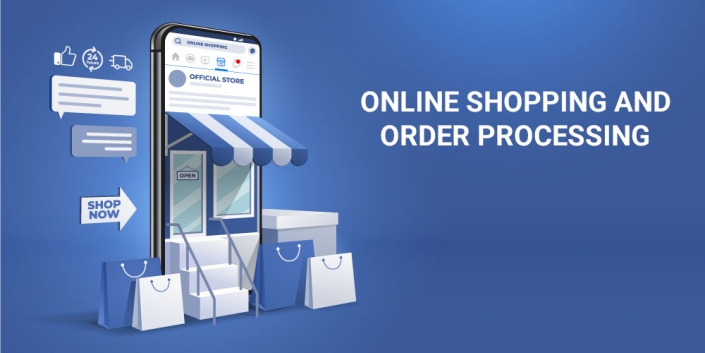
The rise of eCommerce is both an opportunity and a challenge for brands and suppliers.
The ability to reach a much wider audience creates a stronger revenue stream and opens up markets that were previously untapped.
Some brands and suppliers, however, stumble when they begin to process all these direct-to-consumer orders. If the company was accustomed to large wholesale transactions and shipping hundreds of products at once, moving individual orders to multiple addresses presents a much different dynamic.
Without the right approach to order processing, direct-to-consumer orders from online outlets can become a time-consuming, costly exercise. Here are four ways online shopping stresses the retail supply chain, and why it’s important for suppliers to implement an order processing system that works across all channels.
1) 24-hour availability can make items suddenly super hot.
Online shopping is often very trend driven. If an item catches fire or goes viral, the internet can make millions of people aware of it very quickly, and they can purchase it in just a few clicks. That means orders can go from zero to 60 faster than ever before, and at a pace not seen when shopping was limited to brick-and-mortar locations.
For the supply chain, this means that being agile is essential. If you can’t adjust to a surge in demand, you miss out on an opportunity. But you also don’t want to overstock and find yourself with items that aren’t selling. Yes, this has always been an issue in retail, but the rise of online shopping means that it all happens faster than ever before. A software platform like Lingo, backed by a team of experienced developers, can build a workflow that scales quickly when necessary.
2) It makes people make mistakes.
If you have manual tasks in your order processing, a flurry of online orders can quickly overwhelm your team. And even the very best people will eventually start to make errors.
When all your orders are EDI transactions from brick-and-mortar retailers, your team can focus on shipping large wholesale orders of multiple items. You may have to ship to different stores or distribution centers, but you are moving large volumes every time you ship.
But online shopping involves direct-to-consumer fulfillments. Instead of shipping hundreds of items to one address, your company will be expected to get hundreds or thousands of items to hundreds or thousands of different addresses. It’s time-consuming, challenging, and it will leave your team drained.
The remedy is automation. Eliminate cut-and-paste actions, stop generating mailing labels one at a time, and connect directly to major shipping providers. With the right software backed by an expert provider, you can create a system that will populate and create multiple shipments in just a few clicks. Our Lingo platform automates time-consuming tasks so online orders can be processed quickly and without mistakes.
3) It makes shipping costs a differentiator.
With wholesale EDI transactions, the cost of shipping is fairly uniform. Yours are probably very similar to your competitors.
But shipping costs assume added importance when selling items on your own eCommerce store. Without careful monitoring, you can find yourself losing out to the competition if your product is well-priced but your shipping costs are recognizably higher. Consumers are acutely aware of shipping costs, and will factor it into their purchase decision.
If you have an automated process that is reducing your overall expenses, you gain additional flexibility on shipping costs. When you can charge less than your competitors and still provide a healthy margin, you’ll gain more customers.
4) It amplifies customer dissatisfaction.
One large wholesale order is relatively easy to fulfill, and mistakes don’t have the immediate impact of direct-to-consumer feedback.
Imagine that your company is drop shipping items purchased on a retailer web site. You will need to produce retailer-branded packing slips and shipping labels, and ensure that the return information in the package is correct. If a shipment goes awry, the consumer will complain to the retailer. The net result? The retailer is unhappy with your company, loses confidence, and could be less likely to promote your offerings on their web site. Most retailers have spent decades establishing a reputation—they aren’t willing to suffer suppliers who damage it with a few avoidable mistakes.
And if it’s a purchase from your own site? Well, that’s obviously one you need to get right if you’re hoping to turn a buyer into a repeat customer. Online shoppers have scant patience for delays, incorrect items, or difficult returns.
What’s more, online buyers post reviews. A few negative ones quickly sow doubt about your items among prospective buyers. Just as demand for an item can happen quickly online, so can damaging, negative reviews.
EDI transactions and online orders should be automated, easily tracked, and use the same workflow. Not only will this save valuable time, it simplifies the process. That means fewer mistakes and less overhead expense.
If you’re finding online, direct-to-consumer orders are putting stress on your retail supply chain, let’s talk about how our experts and our cloud-based Lingo platform can improve productivity, eliminate time-intensive tasks, and save your company money.
Call us at 877-765-3564, Option 1, or send an email to sales@ezcomsoftware.com with a message about your online order challenges. We'll be happy to discuss solutions or schedule a demo of Lingo.







